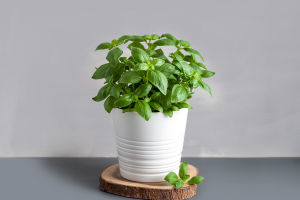Tulips are vibrant and elegant flowers that bring life and color to gardens in the spring. Their arrival signals the end of winter, making them a cherished addition to any landscape.
Here’s how to grow and care for them.
Understanding Tulips
Seasonal Growth
Tulips begin sprouting in late winter or early spring. These flowers are surprisingly hardy, tolerating cold temperatures well. Snow can even act as a natural insulator, shielding their tender leaves from harsh frosts.
Flower Features
Tulips come in various shapes, including cups, bowls, and goblets. Their heights range from a modest 6 inches to an impressive 2 feet. Each stem holds a single flower, accompanied by broad, lush leaves.
How 2 Billion Tulip Bulbs Are Produced and Harvested - Tulips Cultivation Technique in Green House
Video by Noal Farm
Planting Tulips in Autumn
Tulips are planted in the fall, around 6 to 8 weeks before the ground freezes. By selecting varieties with different bloom times, it’s possible to enjoy tulips throughout the spring. Many tulips are excellent choices for cutting gardens and even indoor arrangements.
Annuals or Perennials?
Although tulips are technically perennials, hybrid varieties often fail to bloom year after year due to their delicate nature. Many gardeners treat them as annuals, planting fresh bulbs every autumn.
How to Plant Tulips
Choosing the Right Location
Select a sunny spot with well-drained soil that’s slightly acidic to neutral. In warmer climates, choose a site with morning sun or partial shade to avoid overheating.
Planting Instructions
Dig a hole about 8 inches deep, ensuring proper drainage.
Space bulbs 4 to 6 inches apart and place them with the pointed end up.
Water thoroughly after planting to promote root growth.
For better results, mix in compost or balanced fertilizer to enrich the soil.
Caring for Tulips
Water sparingly, as overwatering can cause bulbs to rot.
Apply compost once a year to maintain soil fertility.
Deadhead flowers after they fade, but leave the foliage intact for about six weeks to allow energy storage for next year’s blooms.
Wild Species
Wild tulips like Tulipa bakeri or T. turkestanica are smaller and thrive in rock gardens or natural landscapes. They add a touch of charm with their delicate forms and natural appeal.
Harvesting Tulips
Dear Lykkers! Cut tulips when their buds are almost ready to bloom. Trim the stems diagonally and change the vase water daily to keep them fresh for up to a week. These flowers continue to grow in the vase, adding dynamic beauty to any arrangement.
Facts
The name “tulip” comes from the Turkish word tülbent, referring to a turban.
In 17th-century Holland, tulips were so valuable they were considered a luxury item.
Red tulips are said to symbolize a declaration of love.
Common Challenges
Tulips can face issues like gray mold, aphids, and bulb rot. Rodents like squirrels and rabbits may also target the bulbs. Protective measures such as using thorny leaves or planting bulbs in wire cages can help prevent damage.
Tulips bring a burst of color and joy to any garden. With proper care and planning, these flowers will brighten the landscape year after year.


